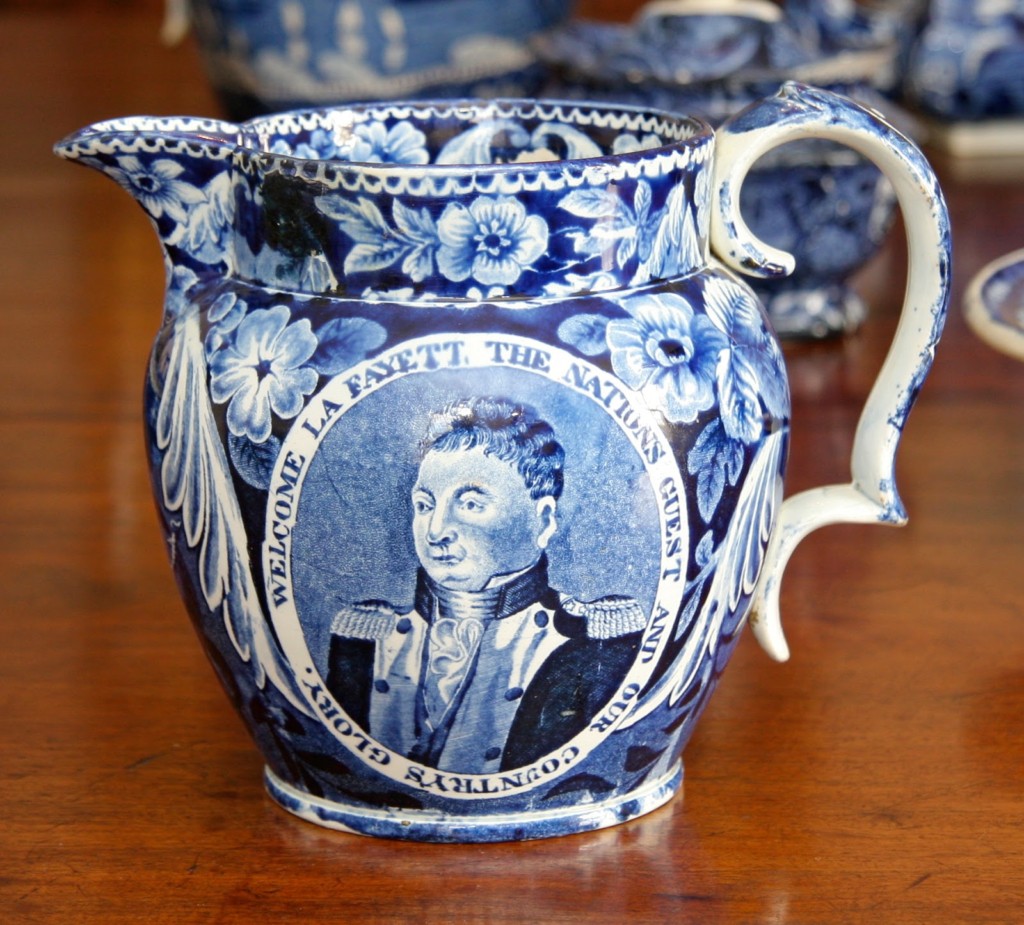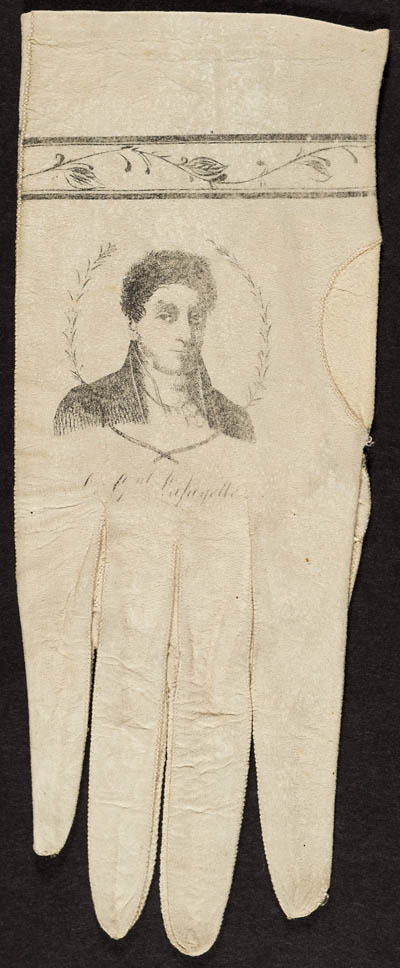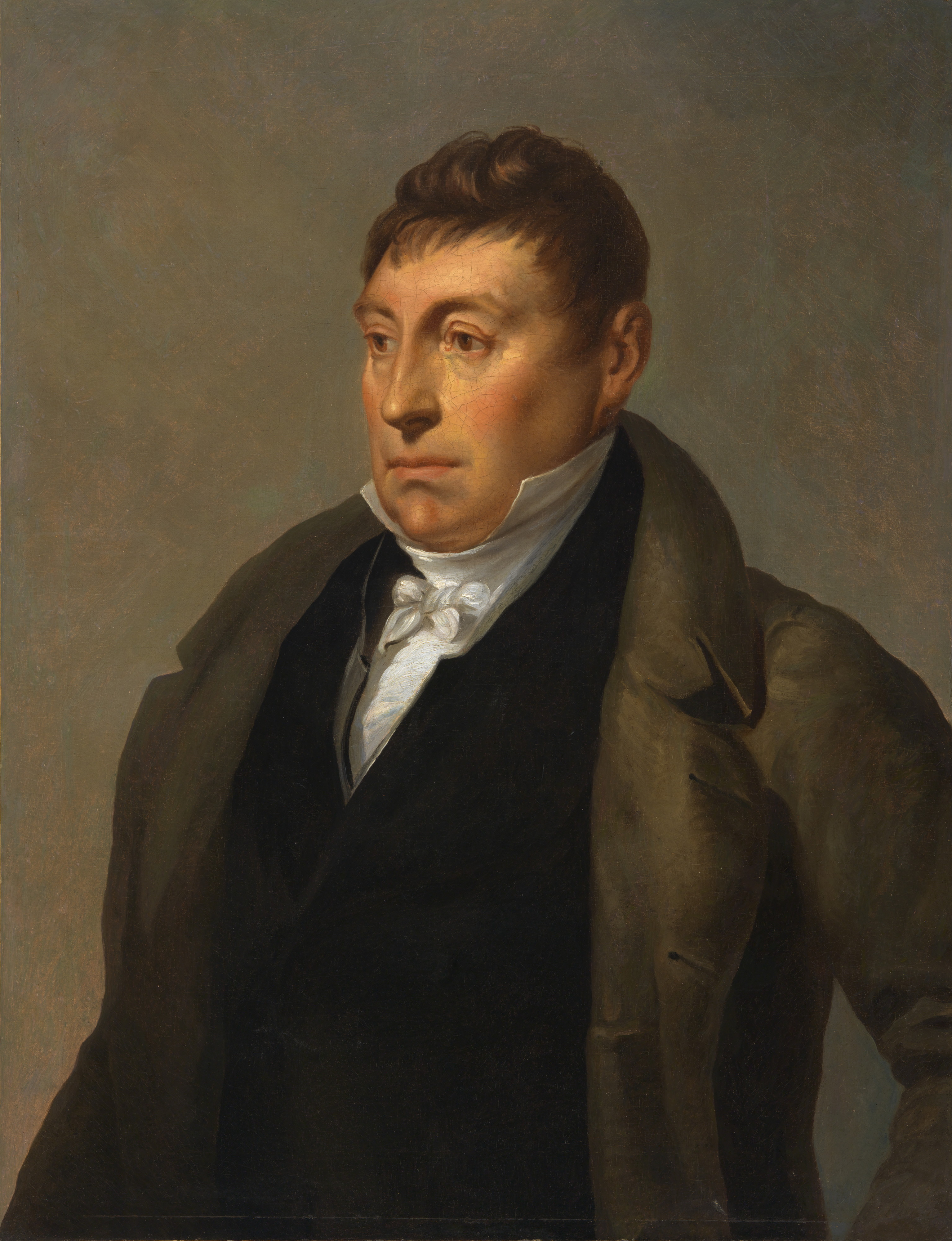
The fog was thick that morning and the sea becalmed when another vessel was spotted in the distance by British army officers en route to Halifax, Nova Scotia. There is a formidable distance between the two ships, but a small cutter carrying several men in uniforms is quickly dispatched to confront the small packet ship.1 Upon boarding, the officers begin to interrogate the captain while they “exhibited at first no little arrogance of manners2“. Suddenly a tall gentleman steps forward, interrupting the humorless exchange.
He is an older man with estimable bearing of a nobility; the dark wig he wears is close-cropped around his face, as is the latest fashion. His dress was staid: a jet black cutaway and chestnut great coat and black top hat. His deeply hooded eyes seemed to glimmer with their familiar youthful intensity – though his face was lined in a manner that hinted at endurance of some terrible tragedy, his smile was broad and warm. At the mention of his name, the tenor of the interchange dramatically shifts. The officers immediately remove their hats.
The merchant vessel they boarded was the Cadmus. Her passenger was Major General Gilbert de Motier, Marquis de Lafayette.
Fifty years earlier, a younger version of himself had made this same voyage; a young man with long powdered hair and a uniform heavy with goldwork. He was essentially running away from the privileged life he had in France to seek adventure and further the the ideals of the Enlightenment – a cause which dominated his life. The grand plan for his life was to live at court in Versailles, attached to the household of the Count de Provence (later to become Louis XVIII)3. Lafayette was what was known as a noblesse d’épée (noble of the sword) and was from one of the oldest military families in France nobility. A life at court seemed to be in direct conflict with his own nature, so he ensured rejection from the Count by gushing his own revolutionary ideals about the equality of man and the preciousness of liberty; then with his own money he outfitted a war ship, La Victoire, to travel to the American Colonies.

After the American Revolution, Lafayette had supported the effort in France to empower the average citizen, essentially undermining his own birthright to privileges as a member of the aristocracy. With the help of Thomas Jefferson he had written The Declaration of the Rights of Man and Citizen, a document that in many ways echoed the Magna Carta, as did the American Constitution; both documents reasserted the rights of the individual and outlined the means for establishing equality, regardless of social footing4. For a shining moment, it seems that Lafayette might achieve his goals of imbuing Enlightenment ideals into the French government and monarchy, but just as quickly as his influence and eminence had risen, it all came crashing down upon him. The power of Maximillien Robspierre would eclipse his own, and Lafayette, as consequence of his birth and title would be labeled a pawn of the monarchy. He fled to Austria, where he was held prisoner for the next 5 years. He would only be released after Napoleon’s victory in Italy. His attempts to stay to the middle road had failed on his home soil, but in America, the ideals he fought for were bearing fruit.

In the end, Lafayette and his immediate family would escape the Reign of Terror, but it left the family’s wealth and prestige in tatters. The Marquis would turn his hand to farming, in a gentlemanly fashion, though it was a great demotion for a man who had played such a pivotal part in history – a renowned “hero”. That is when he received an invitation from President James Monroe to return to the United States to be honored for his hand in the success of the American Revolution.
So it came to be that fifty years after the American Revolution, Lafayette accepted the invitation to return to American soil, for what would be nothing less than an ancient Triumph set in modern times. His tour lasted thirteen months in which he visited all twenty-four states, traveling by carriage, under saddle, by barge and steamboat, covering 6,000 miles and being celebrated, feted, paraded, saluted, escorted by cavalry, ceremonially honored and publicly adored – almost daily – through cities and towns all along the way.
Arriving in New York harbor, a crowd estimated to be as large as 80,000 (about 2/3rd’s of the total population of the city6) was there to greet him, joyously chanting his name. A thirteen gun salute from Fort Diamond announced his arrival, in response cannon volleys from the navy and merchant ships thundered. “The GUEST OF THE NATION-THE GUEST OF TEN MILLIONS OF FREEMEN… Welcome LA FAYETTE! It is a nation’s voice that bids thee WELCOME.”7
“The Marquis Lafayette, the only surviving General of the seven years’ war of our revolution, was conducted from Staten-Island on Monday morning, and landed in New York city, amidst every demonstration of joy and admiration could be bestowed. The news of the General’s arrival had spread though the surrounding country with the rapidity of lightning; and from the dawn of day until noon, the roads and ferry boats were thronged with people who were hastening to the city to participate in the fete, and testify their gratitude for the services, and respect for the character, of the illustrious ‘National Guest.’ Our citizens also turned out in immense numbers at an early hour, and, together with the military, presented the most lively and moving spectacle that we have witnessed on any former occasion.”
– Saturday Evening Post, 1824
He travels through Boston, Hartford, Philadelphia, Baltimore, Richmond and New Orleans; everywhere greeted by crowds of rapturous admirers, hoping to catch a glimpse of the aging Revolutionary War hero. Triumphal arches were swiftly raised, that he might pass under them; as he travels he receives honorary degrees and state citizenships and is glorified as cities re-christen themselves with his name.8 He ceremoniously laid the corner stones for memorials, libraries and other public buildings, receiving “a civil and military display as is seldom seen among men.”9

“We regret to see that in New Haven the populace took off the horses and dragged General Lafayette in his carriage. This is not the offering it becomes a free People to bestow upon a friend of Liberty . . . For the honor of the Nation, and, more than all, for the respect due Lafayette, we trust it will not again occur in the progress of such a man through a nation of free men.”
Saturday Evening Post, 1824

As he moved from town to town each reception was so joyous that Lafayette’s cavalcade would travel late into the night; even then horsemen from the surrounding hinterlands held torches aloft to light his way.6 Such was the mania that surrounded the return of Lafayette, that his visage appeared on everything from fine china pieces to gloves to mantle clocks.10
People remarked on how his presence seemed to improve the weather.
As he entered the teacher’s desk I turned to look at the pupils. A magician’s hand could not have effected a more sudden transformation. […] Smiles and animation had displaced fatigue and anxiety. […] Every eye glistened, but it was with enthusiasm ; every heart swelled with intense interest as we beheld the friend, the defender, the martyr of liberty […] As he left the building, the clouds which had obscured the heavens suddenly became dissipated in the west, and although the rain still fell in torrents, the sun broke forth with unusual splendor, forming a magnificent rainbow in the east. The splendid colors of the rainbow beautifully contrasted with the masses of dark clouds that still skirted the horizon.”11
– George F. Willey

Arriving in remote Maine, a modest arch of evergreens decorated with oak leaves and roses greets him, along with over 15,000 seeing him within the few hours he was in Portland.12 Everywhere that Lafayette travels, he is met is public adoration. Over a year of festivities accompanied Lafayette everywhere he traveled, and when he departed for France, it was aboard the Brandywine, a ship named in honor of Lafayette.
“No one like La Fayette has ever reappeared in any country. To us he is like a venerated father, returned from the grave, to bless and receive the blessings of a mightily increased and joyous prosperity.” 13
- Anonymous. “An Occurance At Sea.” The Mariner’s Chronicle, of Shipwrecks, Fires, Famines and Other Disasters At Sea, Vol I, Jesper Harding, Philadelphia, Pennslyvania, 1849, pp. 14–16. An account of an unknown British army officer’s encounter with Lafayette in the middle of the Atlantic ocean.
- Mack, Ebenezer. The Life of Gilbert Motier De Lafayette …: From Numerous and Authentick Sources, Mack, Andrus & Woodruff, Ithaca, NY, 1841, pg. 306–307.
- Mack, Ebenezer. The Life of Gilbert Motier De Lafayette …: From Numerous and Authentick Sources, Mack, Andrus & Woodruff, Ithaca, NY, 1841, pg. 21.
- “Declaration of the Rights of Man and of the Citizen – 1789 .” Avalon Project – Declaration of the Rights of Man – 1789, https://avalon.law.yale.edu/18th_century/rightsof.asp.
- Neely, Sylvia. “The Politics of Liberty in the Old World and the New: Lafayette’s Return to America in 1824.” Journal of the Early Republic, vol. 6, no. 2, [University of Pennsylvania Press, Society for Historians of the Early American Republic], 1986, pp. 151–71, https://doi.org/10.2307/3122556.
- Vowell, Sarah. Lafayette in the Somewhat United States. Riverhead Books, an Imprint of Penguin Random House, 2016.
- Coffin, Robert S., and William McCarty. “Arrival of General Lafayette from the New York StatesMan (1824).” Songs, Odes, and Other Poems, on National Subjects, Volume III, William McCarty, Philadelphia, Pennsylvania, 1842, p. 348.
- “Celebrating Lafayette in America: Cities and Counties Named for the Marquis De Lafayette.” Celebrating Lafayette – Town Tributes, Lafayette College Special Collections and College Archives , https://academicmuseum.lafayette.edu/special/marquis/CelebratingLafayette/towntributes.htm. Accessed: 12/28/2021
- Parker, A. A. Recollections of General Lafayette on His Visit to the United States, in 1824 and 1825. Nabu Press, 2010.
- “Massachusetts Historical Society. Founded 1791.” MHS Collections Online: Lafayette Souvenir Glove, https://www.masshist.org/database/viewer.php?item_id=4125&pid=3. Accessed: 12/16/2021 “2,500 school children were drawn up in a double line to greet him, ‘all decorated by a Lafayette ribbon’—a portrait of Lafayette stamped on white satin ribbon—worn as a sash or a belt. The city abounded in other souvenirs, most containing an image of the general: there were ceramics of all descriptions including platters, plates, and coffee pots; as well as flasks, quilts, furniture, fans, pins, medals, engravings, badges and ribbons in many designs; and, not least, gloves. A note inside the MHS glove reads: ‘Gloves like this one were sold in Boston, during the visit of Lafayette to this country—and when he kissed the ladies hands he kissed his own face. Came from store now used by Estes and Lauriat.'”
- “Massachusetts Historical Society. Founded 1791.” MHS Collections Online: Lafayette Souvenir Glove, https://www.masshist.org/database/viewer.php?item_id=4125&pid=3. Accessed: 12/16/2021 “2,500 school children were drawn up in a double line to greet him, ‘all decorated by a Lafayette ribbon’—a portrait of Lafayette stamped on white satin ribbon—worn as a sash or a belt. The city abounded in other souvenirs, most containing an image of the general: there were ceramics of all descriptions including platters, plates, and coffee pots; as well as flasks, quilts, furniture, fans, pins, medals, engravings, badges and ribbons in many designs; and, not least, gloves. A note inside the MHS glove reads: ‘Gloves like this one were sold in Boston, during the visit of Lafayette to this country—and when he kissed the ladies hands he kissed his own face. Came from store now used by Estes and Lauriat.'”8. Icher, Julien. “The Lafayette Trail: Mapping General Lafayette’s Farewell Tour in the United States (1824-1825).” American Battlefield Trust, 25 Mar. 2021, https://www.battlefields.org/learn/articles/lafayette-trail-mapping-general-lafayettes-farewell-tour-united-states-1824-1825. Accessed: 12/28/2021
- “Lafayette Returns to America.” New England Historical Society, 6 June 2019, https://www.newenglandhistoricalsociety.com/lafayette-returns-america/. Accessed: 12/28/2021
- Niles, H. “Lafayette’s Visits to the United States.” Niles Weekly Register, 6 Nov. 1824, p. 1. https://earlyushistory.net/niles-register/#v10. Accessed: 12/28/2021.

brianstammVerified
Great article.